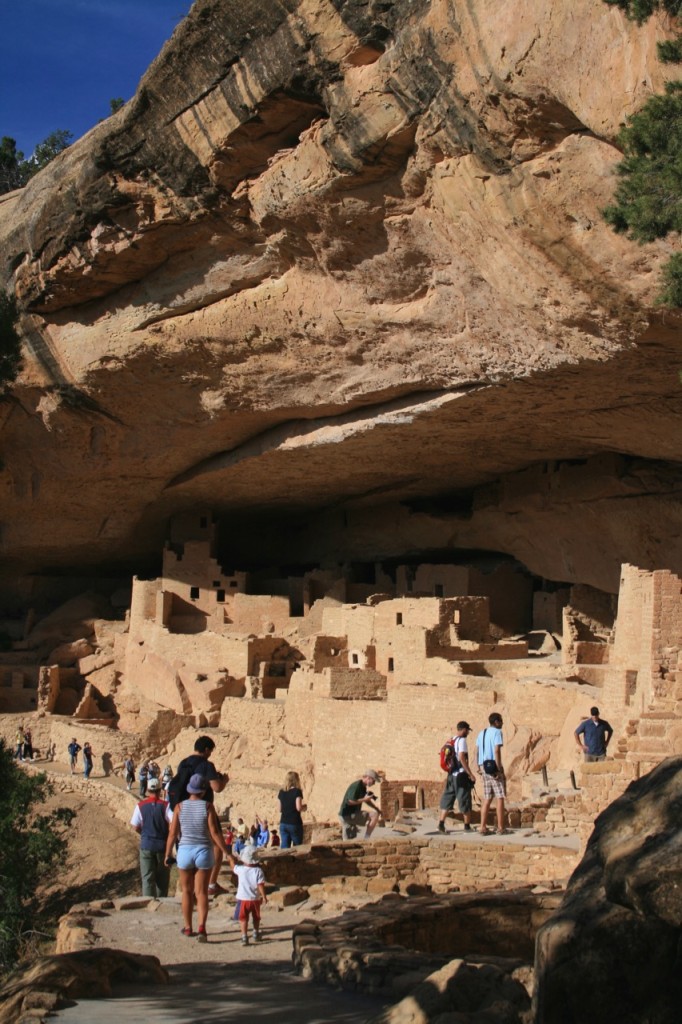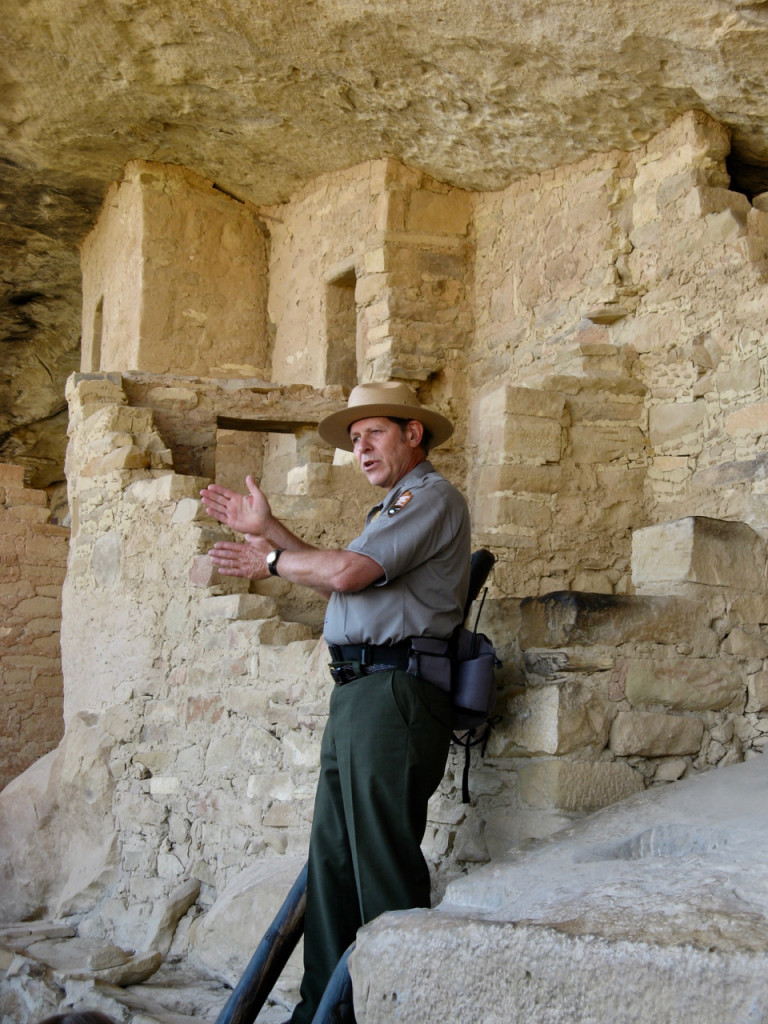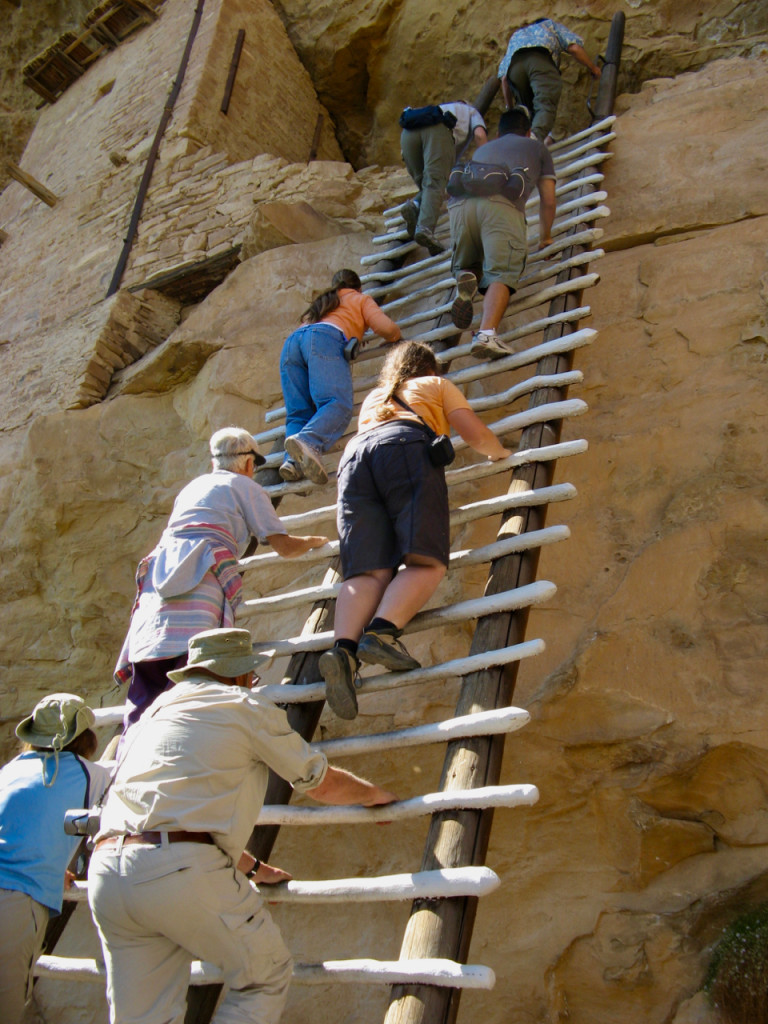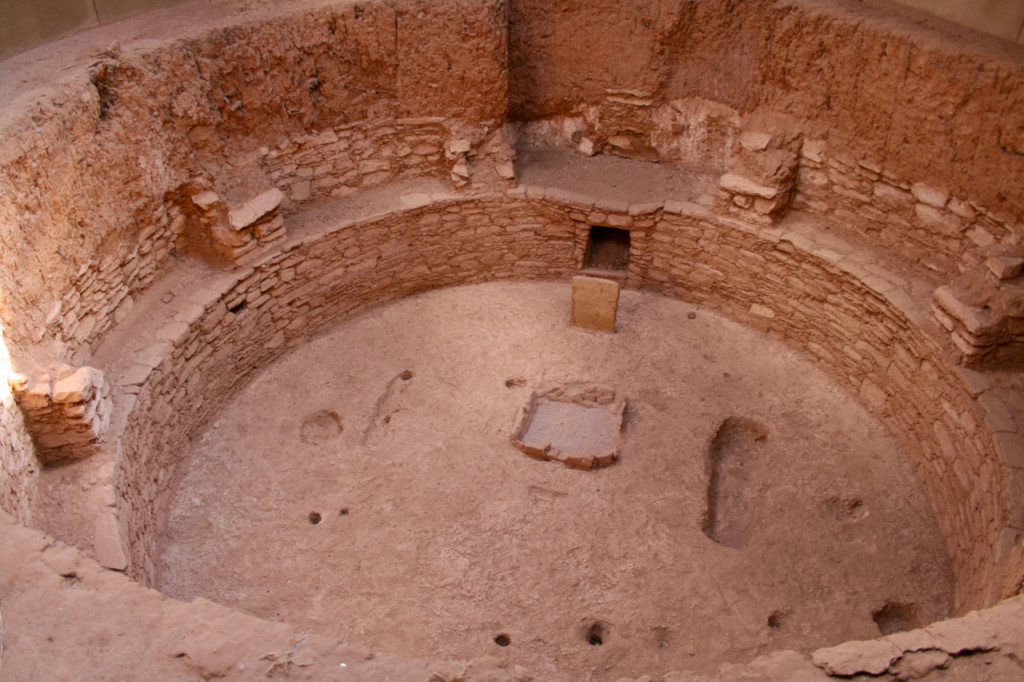Mesa Verde National Park in southwestern Colorado (near Four Corners) ranked Number 1 on my destination list after I first visited its intriguing, mysterious cliff dwellings at age five. I credit my fascination with archaeology to this park. A love for all things ancient has become one of my lifelong passions.
My childhood sense of adventure was kindled by climbing log ladders to reach Mesa Verde’s cliff dwellings—built by the Anasazi people, as they were called when I was a kid. (Today they’re called Ancestral Pueblo people because they were the forebears of the Pueblo tribes that now live in Arizona and New Mexico.) Hearing stories about Anasazi ceremonial, underground, circular rooms, called kivas, sparked my imagination.
Decades later, Mesa Verde continues to enchant me. I’ve take archaeological pilgrimages there four times since my parents first brought me. Over the years, I’ve never tired of hiking southwest Colorado’s desert landscape or pondering the archaeological remnants of the Anasazi culture, which thrived in the area’s canyons and high plateaus from about 600 to 1300 A.D.
Today, the park protects over 4,000 known archeological sites, including 600 cliff dwellings—the most notable and best preserved in the United States. Cliff Palace is the most visited, and it’s exciting because you can see it from a distance before you hike down to explore it.
Ranger Interpretation Adds Dimension
Some of Mesa Verde’s cliff dwellings are open only when you’re guided by a ranger. You’ll need to buy a reserved ticket up to two days in advance at the Mesa Verde Visitor Center or Chapin Mesa Archeological Museum in the national park, or at the Durango Welcome Center in the nearby city of Durango.
Though it takes some extra effort and cost ($5 per person), it’s well worth it. The rangers who led my husband and I through the beautiful dwellings were fountains of knowledge—and their knowledge of history and archaeology helped bring the ruins to life.
You don’t need to know that little windowed niches tucked under the cliffs were for storing corn and beans to appreciate the sandy geometry of the architecture or the permanence of stone. Still, it’s nice to know the function of towers, “middens” or garbage dumps, or about the spiritual significance of the sipapu, a small hole in the floor of the circular kiva. (The sipapu is the symbol of the Place of Emergence, where humans entered through the earth world from the spirit world according to the beliefs of the Puebloans.)
Climbing to Balcony House
To visit the Balcony House ruin, you climb log ladders up a cliff, scramble through Balcony House’s narrow passageway just as the ancients who lived here a millennia ago did.
Four decades after I first visited as a little kid, Balcony House’s tunnel is a tight squeeze for me—yet Mesa Verde continues to charm me. Ranger Tim McNeil described the Ancestral Puebloan diet, which relied heavily on piñon nuts and “The Three Sisters”: corn, beans and squash, which are not only staples, but grow symbiotically.
Looking at thousand-year-old beams and rooms gives me a different perspective—of how short a time we have to live, and how many wonderful antiquities there are to explore.
For details on Mesa Verde, see Visit Mesa Verde. For information on the region, visit Mesa Verde Country.
—Laurel Kallenbach, freelance writer
First posted in August 2011
Read more about my travels in America’s national parks and monuments:
- Sea Kayaking in California’s Channel Islands
- Snowshoeing in Rocky Mountain National Park
- Fossils Come Alive at Dinosaur National Monument
- 10 Reasons to Celebrate America’s National Parks
- Castles in the Utah Desert: Hovenweep National Monument
- Solar Power Lights Ft. McHenry Historic Monument
- Sleep in a Sustainable Hotel in Mesa Verde National Park
- Treasures of Canyons of the Ancients National Monument
- Explore a ruined pueblo: Canyons of the Ancients National Monument
- Discover Painted Hand Pueblo in Canyons of the Ancients





My most evocative kiva experience came not at Mesa Verde Natl Park but at Lowry Pueblo somewhat to the northwest. This site is administered bt the Bureau of Land Management, which has a more laissez-faire attitude toward visitation. My first visit was before the Canyon of the Ancients National Monument Designation. There was little or no signage, no particular protection of the site, and no one around except my husband and me. We wandered around at will, listened to the cicadas and the occasional whisp of a breeze. The tranquility and isolation were unforgettable. Claire @ http://www.travel-babel.com
Did you see my post about Lowry Pueblo? Though it’s less impressive than the sites that are open in Mesa Verde, it’s pretty quiet tourist-wise, making it a lovely spot to just get the feel of a ruin without having the next tour group tramping around you.
I’ve visited there once before, but your descriptions make me want to go back and do more exploring and hiking.
Go in September or early October. The crowds are minimal and the weather is great! That’s when I visited.
I love Mesa Verde! We were there last year!
Definitely one of my favorite national parks!